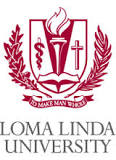Radiation Exposure Using Laser Guided Fluoroscopy in Various Orthopaedic Procedures
| Status: | Completed |
|---|---|
| Conditions: | Orthopedic |
| Therapuetic Areas: | Orthopedics / Podiatry |
| Healthy: | No |
| Age Range: | 18 - 89 |
| Updated: | 10/19/2013 |
| Start Date: | August 2009 |
| End Date: | June 2011 |
| Contact: | Montri D Wongworawat, MD |
| Email: | mwongworawat@llu.edu |
| Phone: | 909-558-6444 |
Introduction: The orthopaedic surgeon is frequently exposed to ionizing radiation,
especially during intraoperative fluoroscopy. It is expected that using a laser guided
fluoroscopy technique, which should improve accuracy of radiography, should also reduce the
amount of time of exposure to radiation. Finally, the literature appears controversial in
this matter with no clear conclusions that could be drawn from such.
Hypothesis: The test hypothesis is that the use of the laser-aiming device for fluoroscopy
in several orthopaedic procedures will reduce the exposure of the patient and the surgeon to
the damaging effects of radiation. The null hypothesis then states that there will be no
difference in exposure to radiation between the group using the laser device and the group
not using the apparatus.
Methods: A prospective randomized controlled trial will be performed in which patients
undergoing fluoroscopy will be randomly allocated to two groups. One group will undergo
imaging with use of the device throughout the procedure and the other group will undergo
radiation without the laser guided device. Number and time of exposure will be recorded for
each procedure. It is of the utmost importance that the complexity of the procedures remains
relatively similar. It is believed that a good measure of complexity is the surgical time.
Therefore, any procedures that are statistically similar from a set mean (p > 0.05) would be
included into the study. It is also important that one or two surgeons with similar
expertise and years of experience perform the surgeries to avoid confounding factors. It is
expected that throughout the duration of the study (8 weeks) 50-100 cases would be reported
which would produce statistically significant results. The results will be analyzed by
calculating confidence intervals and differences between means of continuous data and
significance levels by the Student's t test. Statistical significance will be set to P <
0.05.
Risks and Benefits: This study involves minimal risk. The use of the laser guide will not
increase or introduce any risks other than the associated inherent surgical risks. The risks
usually associated with this type of studies concern breach of confidentiality. To reduce
this risk, research numbers will be assigned to subjects' data collected during the
procedure, whose personal information will be found in another password-protected database.
This study will help the investigators to investigate a technique that may help reduce the
amount of time that a patient is exposed to radiation.
Inclusion Criteria:
- Patients with fractures requiring surgery with fluoroscopic assistance
Exclusion Criteria:
- Patients with fractures treated without surgery
We found this trial at
1
site
Loma Linda University Loma Linda University (LLU) is a Seventh-day Adventist educational health-sciences institution with...
Click here to add this to my saved trials
